- Home
- Patricia Cornwell
Scarpetta 18 - Port Mortuary Page 14
Scarpetta 18 - Port Mortuary Read online
Page 14
“Question is whether he was facedown when he fell.” Marino is looking at what Investigator Lester Law e-mailed to him. “Or is he on his back in these pictures because the EMTs turned him over?”
“To do CPR they would have had to turn him faceup.” I move closer to look.
Marino clicks through several photos, all of them the same but from different perspectives: the man on his back, his dark-green jacket and denim shirt open, his head turned to one side, eyes partly closed; a close-up of his face, debris clinging to his lips, what looks like particles of dead leaves and grass and grit.
“Zoom in on that,” I tell Marino, and with a click of the mouse, the image is larger, the man’s boyish face filling the screen.
I return to the body behind me and check for injuries of his face and head, noting an abrasion on the underside of the chin. I pull down the lower lip and find a small laceration, likely made by his lower teeth when he fell and hit his face on the gravel path.
“Couldn’t possibly account for all the blood I saw,” Anne says.
“No, it couldn’t,” I agree. “But it suggests he hit the ground face-first, which also suggests he dropped like a shot, didn’t even stumble or try to break his fall. Where’s the pouch he came in?”
“I spread it out on a table in the autopsy room, figured you’d want to have a look,” Anne tells me. “And his clothes are airdrying in there. When I undressed him, I put everything in the cabinet by your station. Station one.”
“Good. Thank you.”
“Maybe somebody punched him,” Marino offers. “Maybe distracted him by punching or elbowing him in the face, then stabbed him in the back. Except that probably would have been recorded, would be on the video clips.”
“He would have more than just this laceration if someone punched him in the mouth. If you look at the debris on his face and the location of the headphones”—I’m back at the computer, clicking on images to show them—“it appears he fell facedown. The headphones are way over here, what looks like at least six feet away under a bench, indicating to me that he fell with sufficient force to knock them a fair distance and disconnect them from the satellite radio, which I believe was in a pocket.”
“Unless someone moved the phones, perhaps kicked them out of the way,” Benton says.
“That was my other thought,” I reply.
“You mean like somebody who tried to help him,” Marino says. “People crowding around him and the headphones ended up under a bench.”
“Or someone did it deliberately.”
There is something else I notice. Clicking through the slide-show, I stop on a photograph of his left wrist. I zoom in on the steel tachymeter watch, move in close on its carbon-fiber face. The time stamp on the photograph is five-seventeen p.m., which is when the police officer took it, yet the time on the watch is ten-fourteen, five hours later than that.
“When you collected the watch this morning”—I direct this to Marino—“you said it appeared to have stopped. You sure it wasn’t simply that the time was different than our local time?”
“Nope, it was stopped,” he says. “Like I said, one of those self-winding watches, and it quit at some point early in the morning, like around four a.m.”
“Seems it might have been set five hours later than Eastern Standard Time.” I point out what I’m seeing in the photograph.
“Okay. Then it must have stopped around eleven p.m. our time,” Marino says. “So it was set wrong to begin with and then it quit.”
“Maybe he was on another time zone because he’d just flown in from overseas,” Benton suggests.
“Soon as we finish up here, I got to find his apartment,” Marino says.
I check the quality-control numbers in the quality-control log, making sure standard deviation is zero and the noise level of the system or variation is within normal limits.
“We ready?” I say to everyone.
I’m eager to do the scan. I want to see what is inside this man.
“We’ll do a topogram, then collect the data set before going to three-D recon with at least fifty percent overlapping,” I tell Anne as she presses a button to slide the table into the scanner. “But we’ll change the protocol and start with the thorax, not the head, except, of course, for using the glabella as our reference.”
I refer to the space between the eyebrows above the nose that we use for spatial orientation.
“A cross-sectional of the chest exactly correlating with the region of interest you’ve marked.” I go down the list as we return to the control room. “An in situ localization of the wound; we’ll isolate that area and any associated injury, any clues in the wound track.”
I seat myself between Ollie and Anne, and then Marino and Benton pull up chairs behind us. Through the glass window I can see the man’s bare feet in the opening of the scanner’s bore.
“Auto and smart MT, noise index eighteen. Point-five segment rotation, point-six-two-five detector configuration,” I instruct. “Very thin slice ultra-high resolution. Ten-millimeter collimation.”
I can hear the electronic pulsing sounds as detectors begin rotating inside the x-ray tube. The first scan lasts sixty seconds. I watch in real time on a computer screen, not sure what I’m seeing, but it shouldn’t be this. It occurs to me the scanner is malfunctioning or that some other patient’s scan is displayed, the wrong file accessed. What am I looking at?
“Jesus,” Ollie says under his breath, frowning at images in a grid, strange images that must be a mistake.
“Orient in time and space, and let’s line up the wound back to front, left to right, and upward,” I direct. “Connect points to get the penetration of the wound track, well, such as it is. There is a wound track and then it disappears? I don’t know what this is.”
“What the hell am I looking at?” Marino asks, baffled.
“Nothing I’ve ever seen before, certainly not in a stabbing,” I reply.
“Well, for one thing, air,” Ollie announces. “We’re seeing a hell of a lot of air.”
“These dark areas here and here and here.” I show Marino and Benton. “On CT, air looks dark. As opposed to the brighter white areas, which show higher density. Bone and calcification are bright. You can get a pretty good idea of what something is by the density of the pixels.”
I reach for the mouse and move the cursor over a rib so they can see what I mean.
“CT number is one thousand one hundred and fifty one. Whereas this not-so-bright area here”—I move the cursor over an area of lung—“is forty. That’s going to be blood. These dullish dark areas you’re seeing are hemorrhage.”
I’m reminded of high-velocity gunshots that cause tremendous crushing and tearing of tissue, similar to injury caused by the blast wave from an explosion. But this isn’t a gunshot case. This isn’t from a detonated explosive device. I don’t see how either could be true.
“Some kind of wound that travels through the left kidney, superiorly through the diaphragm and into the heart, causing profound devastation along the way. And all this.” I point to murky areas around internal organs that are displaced and sheared. “More subcutaneous air. Air in the paraspinal musculature. Retroperitoneal air. How did all this air get inside of him? And here and here. Injury to bone. Rib fracture. Fracture of a transverse process. Hemopneumothorax, lung contusion, hemopericardium. And more air. Here and here and here.” I touch the screen. “Air surrounding the heart and in the cardiac chambers, as well as in the pulmonary arteries and veins.”
“And you’ve never seen anything like this?” Benton asks me.
“Yes and no. Similar devastation caused by military rifles, antitank cannons, some semiautomatics using extreme shock-fragmenting high-velocity ammunition, for example. The higher the velocity, the greater the kinetic energy dissipates at impact and the greater the damage, especially to hollow organs, such as bowel and lungs, and nonelastic tissue, such as the liver, the kidneys. But in a case like that, you expect a clear wound track and a
missile or fragments of one. Which we aren’t seeing.”
“What about air?” Benton asks. “Do you see these pockets of air in cases like that?”
“Not exactly,” I reply. “A blast wave can create air emboli by forcing air across the air-blood barrier, such as out of the lungs. In other words, air ends up where it doesn’t belong, but this is a lot of air.”
“A hell of a lot,” Ollie concurs. “And how do you get a blast wave from a stabbing?”
“Do a slice right through those coordinates,” I say to him, indicating the region of interest marked by a bright white bead—the radio-opaque CT skin marker that was placed next to the wound on the left side of the man’s back. “Start here and keep moving down five millimeters above and below the region of interest specified by the markers. That cut. Yes, that’s the one. And let’s reformat into virtual three-D volume rendering from inside out. Thin, thin cuts, one millimeter, and the increment between them? What do you think?”
“Point-seventy-five by point-five will do it.”
“Okay, fine. Let’s see what it looks like if we virtually follow the track, what track there is.”
Bones are as vivid as if they are laid bare before us, and organs and other internal structures are well defined in shades of gray as the dead man’s upper body, his thorax, begins to rotate slowly in three-dimension on the video display. Using modified software originally developed for virtual colonoscopies, we enter the body through the tiny buttonhole wound, traveling with a virtual camera as if we are in a microscopic spaceship slowly flying through murky grayish clouds of tissue, past a left kidney blown apart like an asteroid.
A ragged opening yawns before us, and we pass through a large hole in the diaphragm. Beyond is shattering, shearing, and contusion. What happened to you? What did this? I don’t have a clue. It’s a helpless feeling to find physical damage that seems to defy physics, an effect without a cause. There’s no projectile. There’s no frag, nothing metal I can see. There’s no exit wound, only the buttonhole entrance on the left side of his back. I’m thinking out loud, repeating important points, making sure everyone understands what is incomprehensible.
“I keep forgetting nothing works down here,” Benton comments distractedly as he looks at his iPhone.
“Nothing exited, and nothing is lighting up.” I calculate what must be done next. “No sign of anything ferrous, but we need to be sure.”
“Absolutely no idea what could have done this,” Benton states rather than asks as he gets up from his chair, making rustling sounds as he unties his disposable gown. “You know the old saying, nothing new under the sun. I guess like a lot of old sayings, it’s not true.”
“This is new. At least to me,” I reply.
He bends over and pulls off his shoe covers. “No question he’s a homicide.”
“Unless he ate some really bad Mexican food,” Marino says.
It vaguely drifts through my thoughts that Benton is acting suspiciously.
“Like a high-velocity projectile, but there’s no projectile, and if it exited the body, where’s the exit wound?” I keep saying the same thing. “Where the hell’s the metal? What the hell could he have been shot with? An ice bullet?”
“I saw a thing about that on MythBusters. They proved it’s impossible because of heat,” Marino says, as if I’m serious. “I don’t know, though. Wonder what would happen if you loaded the gun and kept it in the freezer until you were ready to fire it.”
“Maybe if you’re a sniper in the interior of Antarctica,” Ollie says. “Where’d that idea come from, anyway? Dick Tracy? I’m asking for real.”
“I thought it was James Bond. I forget which movie.”
“Maybe the exit wound isn’t obvious,” Anne says to me. “Remember that time the guy was shot in the jaw and it exited through his nostril?”
“Then where’s the wound track?” I reply. “We need better contrast between tissues, need to be damn sure there’s nothing we’re missing before I open him up.”
“If you need my help with that, I can call the hospital,” Benton says as he opens the door. I can tell he’s in a hurry, but I’m not sure why.
It’s not his case.
“Otherwise, I’ll check on what Lucy’s found,” Benton says. “Take a look at the video clips. Check on a couple other things. You don’t mind if I use a phone up there.”
“I’ll make the call,” Anne says to him as he leaves. “I’ll get it arranged with McLean and take care of the scan.”
It’s been a theoretical possibility this day would come, and we are cleared with the Board of Health, and with Harvard and its affiliate McLean Hospital, which has four magnets ranging in strength from 1.5 to 9 Tesla. Long ago I made sure the protocols were in place to do MRIs on dead bodies in McLean’s neuroimaging lab, where Anne works as a part-time MR tech for psychiatric research studies. That’s how I got her. Benton knew her first and recommended her. He picks well, is a fine judge of character. I should let him hire my damn staff. I wonder whom he is going to call. I’m not sure why he is here at all.
“If that’s what you want, we can do it right now,” Anne is saying to me. “There shouldn’t be a problem, won’t be anyone around. We’ll just go right up to the front door and get him in and out.”
At this hour, psychiatric patients at McLean won’t be wandering around the campus. There’s little risk of them happening upon a dead body being carried in or out of a lab.
“What if someone shot him with a water cannon?” Marino stares as if transfixed at the rotating torso on the video screen, the ribs curving and gleaming whitely in 3-D. “Seriously. I’ve always heard that’s the perfect crime. You fill a shotgun shell with water, and it’s like a bullet when it goes through the body. But it doesn’t leave a trace.”
“I’ve not had a case like that,” I reply.
“But it could happen,” Marino says.
“Theoretically. However, the entrance wound wouldn’t be like this one,” I reply. “Let’s get going. I want him posted and safely out of sight before everyone starts arriving for work.” It’s almost midnight.
Anne clicks on the icon for Tools to take measurements and informs me the width of the wound track before it blows through the diaphragm is .77 to 1.59 millimeters at a depth of 4.2 millimeters.
“So what that tells me ...” I start to say.
“How about inches,” Marino complains.
“Some type of double-edged object or blade that doesn’t get much wider than half an inch,” I explain. “And once it penetrated the body up to an approximate depth of two inches, something else happened that caused profound internal damage.”
“What I’m wondering is how much of this abnormality we’re seeing is iatrogenic,” Ollie says. “Caused by the EMTs working on him for twenty minutes. That’s probably the first question we’ll get asked. We have to keep an open mind.”
“No way. Not unless King Kong did CPR,” I reply. “It appears this man was stabbed with something that caused tremendous pressure in his chest and a large air embolus. He would have had severe pain and been dead within minutes, which is consistent with what’s been described by witnesses, that he clutched his chest and collapsed.”
“Then why all the blood after the fact?” Marino says. “Why wouldn’t he have been hemorrhaging instantly? How the hell’s it possible he didn’t start bleeding until after he was pronounced and on his way here?”
“I don’t know the answer, but he didn’t die in our cooler.” I am at least sure of that. “He was dead before he got here, would have been dead at the scene.”
“But we got to prove he started bleeding after he was dead. And dead people don’t start bleeding like a damn stuck pig. So how do we prove he was dead before he got here?” Marino persists.
“Who do we need to prove it to?” I look at him.
“I don’t know who Fielding’s told since we don’t even know where the hell he is. What if he’s told somebody?”
Like you did, I
think, but I don’t say it. “That’s why one should be careful about divulging details when we don’t have all the information.” I couldn’t sound more reasonable.
“We got no choice about it.” Marino won’t let it go. “We have to prove why a dead person started bleeding.”
I collect my jacket and tell Anne, “A head and full-body CT scan first. And on MR, full-body coil, every inch of him, and upload what you find. I’ll want to see it right away.”
“I’m driving,” Marino says to her.
“Well, pull it into the bay to warm it up. One of the vans.”
“We don’t want him warming up. Matter of fact, think I’ll put the AC on full-blast.”
“Then you can ride just the two of you. I’ll meet you there.”
“Seriously. He warms up, he might start bleeding again.”
“You’ve been watching too much Saturday Night Live.”
“Dan Aykroyd doing Julia Child? Remember that? ‘You’ll need a knife, a very, very sharp knife.’ And blood spurting everywhere.”
The three of them bantering.
“That was so funny.”
“The old ones were better.”
“No kidding. Roseanne Roseannadanna.”
“Oh, God, I love her.”
“I’ve got them all on DVD.”
I hear them laughing as I walk away.
Scanning my thumb, I let myself into the area that is the first stop after Receiving, where we do identifications, a white room with gray countertops that we simply call ID.
Built into a wall are gray metal evidence lockers, each of them numbered, and I use the key Marino gave me to open the top one on the left, where the dead man’s personal effects have been safely stored until we receipt them to a funeral home or to a family when we finally know who he is and who should claim him. Inside are paper bags and envelopes neatly labeled, and attached to each are forms Marino has filled out and initialed to maintain chain of custody. I find the small manila envelope containing the signet ring, and initial the form and put down the time I removed it from the locker. At a computer station I pull up a log and enter the same information, and then I think about the dead man’s clothes.

 Blow Fly
Blow Fly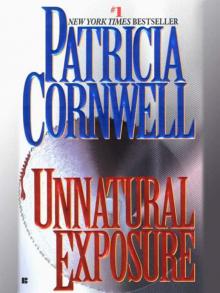 Unnatural Exposure
Unnatural Exposure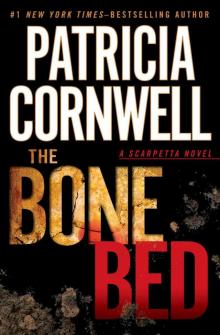 The Bone Bed
The Bone Bed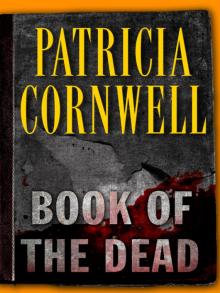 Book of the Dead
Book of the Dead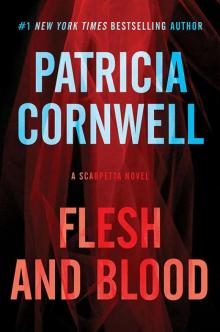 Flesh and Blood: A Scarpetta Novel (Scarpetta Novels Book 22)
Flesh and Blood: A Scarpetta Novel (Scarpetta Novels Book 22)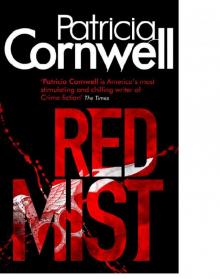 Red Mist
Red Mist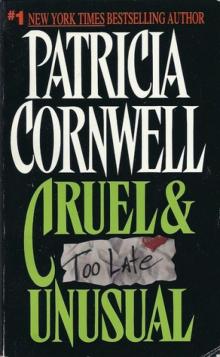 Cruel & Unusual
Cruel & Unusual Hornet's Nest
Hornet's Nest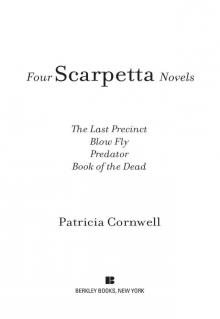 Four Scarpetta Novels
Four Scarpetta Novels Scarpetta's Winter Table
Scarpetta's Winter Table Isle of Dogs
Isle of Dogs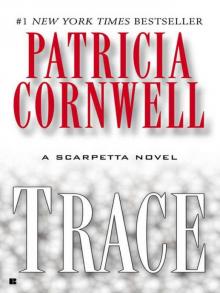 Trace
Trace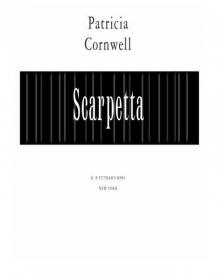 Postmortem
Postmortem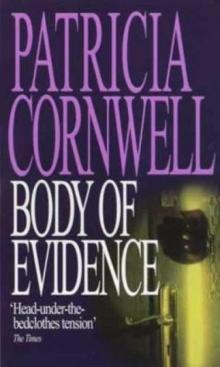 Body of Evidence ks-2
Body of Evidence ks-2 Southern Cross
Southern Cross All That Remains
All That Remains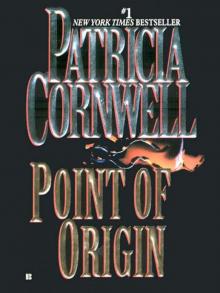 Point of Origin
Point of Origin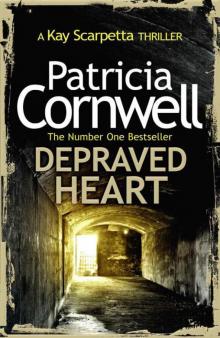 Depraved Heart
Depraved Heart Ruth, a Portrait: The Story of Ruth Bell Graham
Ruth, a Portrait: The Story of Ruth Bell Graham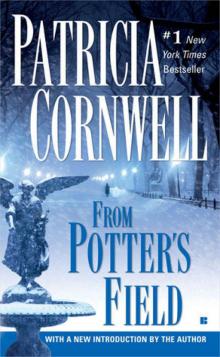 From Potter's Field
From Potter's Field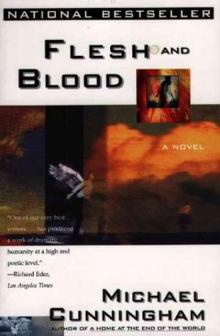 Flesh and Blood
Flesh and Blood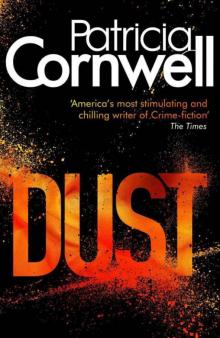 Dust
Dust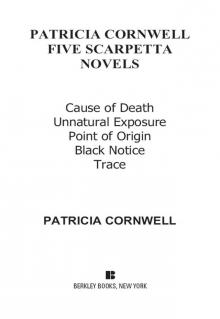 The Body Farm
The Body Farm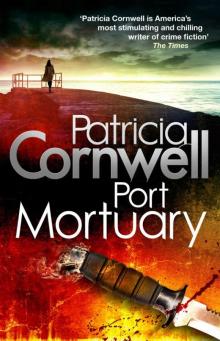 Port Mortuary
Port Mortuary Quantum
Quantum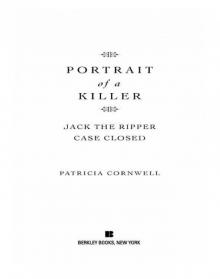 Portrait of a Killer: Jack the Ripper - Case Closed
Portrait of a Killer: Jack the Ripper - Case Closed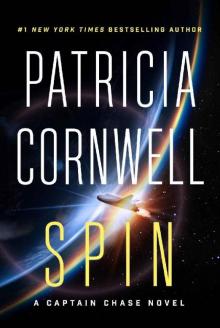 Spin (Captain Chase)
Spin (Captain Chase)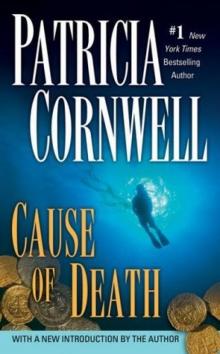 Cause of Death
Cause of Death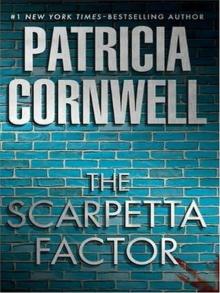 The Scarpetta Factor
The Scarpetta Factor Predator
Predator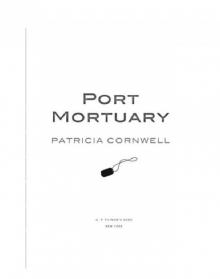 Scarpetta 18 - Port Mortuary
Scarpetta 18 - Port Mortuary Trace ks-13
Trace ks-13 Portrait of a Killer
Portrait of a Killer Cruel and Unusual ks-4
Cruel and Unusual ks-4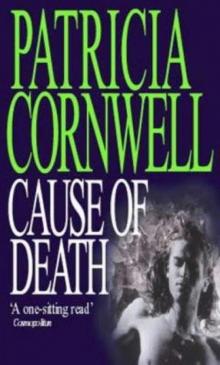 Cause Of Death ks-7
Cause Of Death ks-7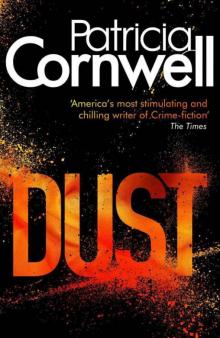 Dust ks-21
Dust ks-21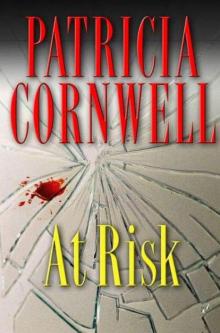 At Risk wg-1
At Risk wg-1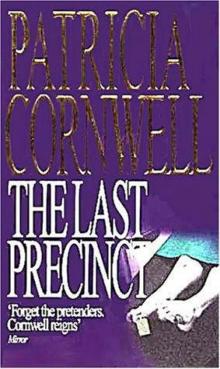 The Last Precinct ks-11
The Last Precinct ks-11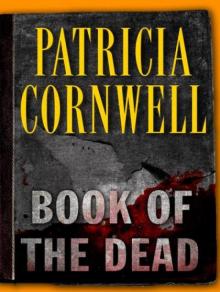 Book of the Dead ks-15
Book of the Dead ks-15 All That Remains ks-3
All That Remains ks-3 Ruth, a Portrait
Ruth, a Portrait Scarpetta's Winter Table (kay scarpetta)
Scarpetta's Winter Table (kay scarpetta) From Potter's Field ks-6
From Potter's Field ks-6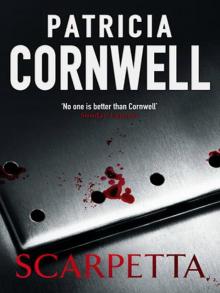 Scarpetta
Scarpetta Isle of Dogs jhabavw-3
Isle of Dogs jhabavw-3 Hornet's Nest jhabavw-1
Hornet's Nest jhabavw-1 The Body Farm ks-5
The Body Farm ks-5 Blow Fly ks-12
Blow Fly ks-12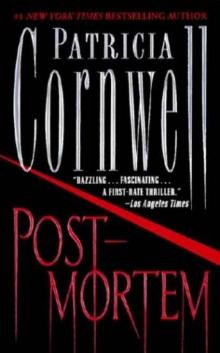 Post Mortem
Post Mortem Five Scarpetta Novels
Five Scarpetta Novels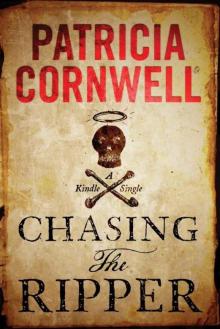 Chasing the Ripper (Kindle Single)
Chasing the Ripper (Kindle Single)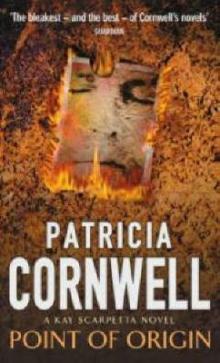 Point of Origin ks-9
Point of Origin ks-9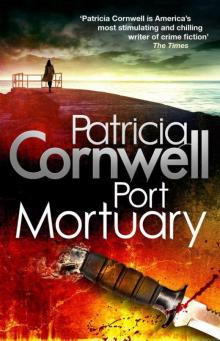 Port Mortuary (2010)
Port Mortuary (2010) Unnatural Exposure ks-8
Unnatural Exposure ks-8 Southern Cross uhabavw-2
Southern Cross uhabavw-2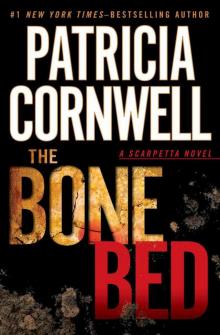 The Bone Bed ks-20
The Bone Bed ks-20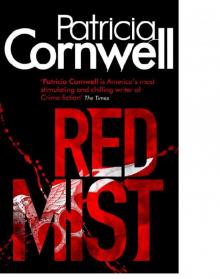 Red Mist ks-19
Red Mist ks-19 Port Mortuary (2010) ks-18
Port Mortuary (2010) ks-18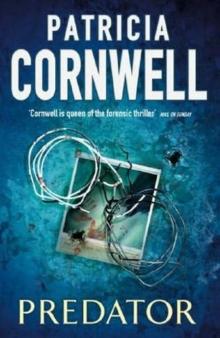 Predator ks-14
Predator ks-14